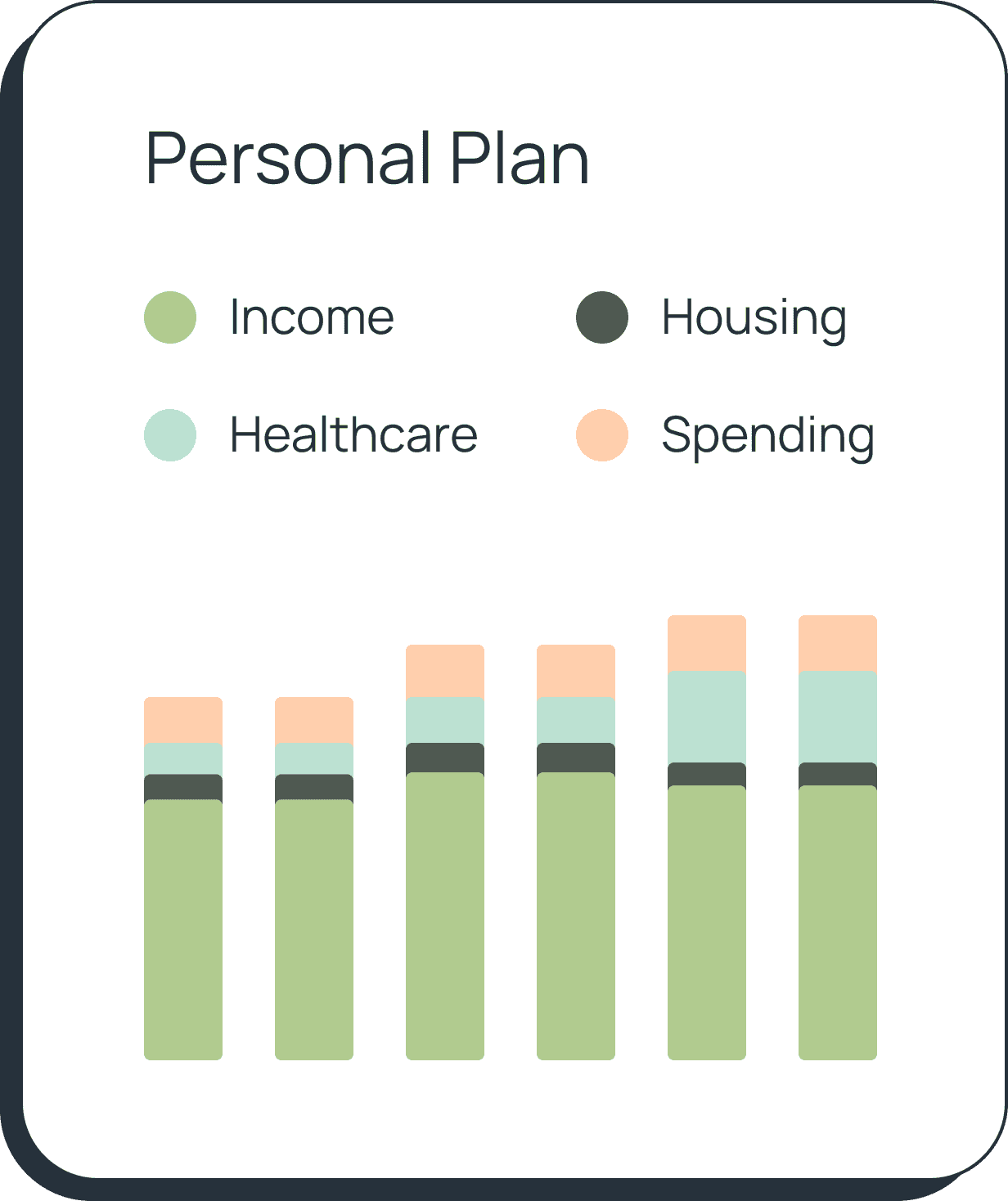Retirement Accounts
If you’re contributing to a 401(k) through your employer, understanding how it’s taxed is key to planning your retirement income. The way your withdrawals are taxed depends on whether you have a traditional 401(k) or a Roth 401(k).

R. Tyler End, CFP®
•
Published March 11th, 2025
•
Updated May 10th, 2025
Table of Contents
Key Takeaways
Traditional 401(k) contributions are made pre-tax, which lowers your taxable income while you’re working.
Withdrawals in retirement are taxed as ordinary income, based on your income tax bracket at the time.
Roth 401(k) contributions are made with after-tax dollars, but qualified withdrawals in retirement are tax-free.
Your tax liability in retirement will depend on your account type and total income from all sources.
If you’re contributing to a 401(k) through your employer, understanding how it’s taxed is key to planning your retirement income. The way your withdrawals are taxed depends on whether you have a traditional 401(k) or a Roth 401(k).
How traditional 401(k)s are taxed
A traditional 401(k) gives you a tax break when you contribute. You use pre-tax income, which lowers your taxable income for the year. The money in your account grows tax-deferred, so you won’t pay taxes on your contributions or earnings until you withdraw them.
In retirement, the IRS taxes your withdrawals as ordinary income. The amount you owe depends on how much you take out each year and which income tax bracket you fall into.
How Roth 401(k)s are taxed
A Roth 401(k) works differently. You contribute with after-tax dollars, which means you don’t receive a tax deduction now. In return, you can take tax-free withdrawals in retirement, as long as you meet the requirements.
To qualify for tax-free distributions, your account must be at least five years old, and you must be at least 59½ years old when you begin taking money out.
Employers often match Roth 401(k) contributions, but those matching funds are treated separately. Because the employer contributes pre-tax dollars, you will owe income tax on that portion when you withdraw it in retirement.
How Are 401(k)s Taxed When You Retire?
One of the biggest advantages of a traditional 401(k) is that you contribute pre-tax income. Instead of paying taxes now, you defer them until retirement. When your employer deposits money into your 401(k), those funds go in before taxes come out of your paycheck. This setup reduces your taxable income in the year you contribute, which can help lower your tax bill.
But taxes eventually come due. If you don’t plan carefully, the tax on your 401(k) withdrawals can take you by surprise. The IRS treats these distributions as ordinary income, which means they are taxed at your regular income tax rate each year you withdraw money.
Taxes on a Regular 401(k)
When you contribute to a 401(k), the tax treatment depends on the type of account. With a traditional 401(k), you make contributions using pre-tax dollars. In most cases, your employer deducts the money directly from your paycheck before withholding income taxes. This setup reduces your taxable income in the year you contribute.
For example, if you earn $100,000 in 2025 and contribute the maximum of $23,000 to your traditional 401(k), the IRS will only tax you on $77,000 of income. That immediate tax break is one of the main benefits of a traditional 401(k), especially during your higher-earning years.
Your money then grows tax-deferred. You won’t pay taxes on any earnings, dividends, or gains in the account until you begin taking withdrawals in retirement. At that point, the IRS treats your distributions as ordinary income and taxes them accordingly.
Taxes on a Traditional 401(k) vs Traditional IRA
Traditional 401(k)s and IRAs share many of the same tax benefits, but a few key differences may affect which one works better for you.
Similarities in taxation
- Pre-tax contributions: Both accounts allow you to contribute income before taxes, lowering your taxable income for the year.
- Tax-deferred growth: Investments in both accounts grow without being taxed until you withdraw funds in retirement.
- Ordinary income tax on withdrawals: Distributions from a traditional IRA or 401(k) are taxed as regular income based on your tax bracket at the time of withdrawal.
Which one is better for taxes?
There is no major difference in the tax rate applied to withdrawals as both accounts are subject to ordinary income tax in retirement. The better option often depends on:
- Whether your employer offers a 401(k) with a match
- How much control you want over your investments
- Your contribution goals
Many savers use both to take full advantage of the annual contribution limits and maximize tax-deferred retirement savings.
Taxes on a Roth 401(k)
A Roth 401(k) offers a very different tax benefit than a traditional 401(k). Instead of deferring taxes, you pay them upfront. Your contributions come from income that has already been taxed, so you won’t owe any taxes on qualified withdrawals in retirement.
How Roth 401(k) taxes work
- You contribute with after-tax dollars, meaning there's no tax deduction when you fund the account.
- Your investments grow tax-free.
- When you retire, you can withdraw both contributions and earnings without paying taxes, as long as the withdrawals are qualified.
IRS requirements for tax-free withdrawals
To avoid taxes on Roth 401(k) distributions, you must meet two conditions:
- The account must be open for at least five years.
- You must be at least 59½ years old when you make withdrawals.
You can also qualify for tax-free distributions if you become disabled or pass away, in which case your beneficiaries may receive the funds without tax penalties.
Special 401(k) Tax Strategies
After you understand how your 401(k) withdrawals are taxed, you might start looking for ways to reduce your tax bill in retirement. Fortunately, a few smart strategies can help you keep more of your money.
1. Delay withdrawals until you need them
If you don’t need the money right away, consider holding off on withdrawals until later in retirement. This approach allows your investments to continue growing tax-deferred. Keep in mind that required minimum distributions (RMDs) start at age 73, or 75 if you turn 74 after December 31, 2032.
2. Use Roth conversions strategically
You can convert some of your traditional 401(k) or IRA funds into a Roth account. You’ll pay taxes on the amount converted, but future qualified withdrawals will be tax-free. Many retirees convert small amounts over time to reduce the long-term tax impact and avoid bumping into a higher tax bracket.
3. Manage your tax bracket
Plan withdrawals carefully to stay within a lower tax bracket. Combine your 401(k) distributions with other sources of income, such as Social Security or taxable investments, in a way that avoids triggering higher tax rates.
Roll Over Funds
When you leave a job, one important decision involves what to do with your 401(k). While you're still employed, most plans won’t let you move the funds. But once you resign or change employers, you gain full control over what happens next.
The simplest and most tax-efficient option is a direct rollover. This moves your retirement savings straight from your old 401(k) into another qualified retirement account, such as an IRA or your new employer’s 401(k). If you take the money yourself and don’t deposit it into a new account within 60 days, the IRS may treat it as a withdrawal. You’ll likely owe income tax, and if you’re under 59½, you could also face a 10% penalty.
You can also roll over your 401(k) into a Roth IRA. This is known as a Roth conversion. You will owe taxes on the full amount transferred, and depending on how much you convert, it could push you into a higher tax bracket for that year. The benefit is that once the money is in the Roth IRA, it grows tax-free, and qualified withdrawals won’t be taxed in retirement.
Another option is to move your old 401(k) into your new employer’s plan, if their policy allows it. This can make it easier to manage your investments by keeping everything in one place. The right decision depends on your goals, current tax situation, and whether you value tax-free income in the future.
Declare Company Stock a Capital Gain
If your 401(k) includes company stock, you may qualify for a tax strategy called Net Unrealized Appreciation (NUA). This allows you to move the stock portion of your 401(k) into a taxable investment account instead of an IRA. You’ll only pay ordinary income tax on the cost basis of the shares, while any gains are taxed later at the long-term capital gains rate when you sell.
This strategy works best when there’s a large difference between what the stock was worth when you received it and its current value. Long-term capital gains rates are usually lower than income tax rates, which can result in meaningful tax savings. NUA rules can be complex, so it's a good idea to consult a financial advisor before moving forward.
Final Thoughts
If you have a traditional 401(k), expect to pay income tax on your withdrawals in retirement. Understanding how these distributions are taxed can help you plan ahead and avoid surprises. Whether you're considering a rollover, a Roth conversion, or simply managing multiple accounts, each decision has long-term financial implications.
We recommend working with a Certified Financial Planner® to ensure your retirement is well funded.
Share this advice

Tyler is a Certified Financial Planner® and CEO & Co-Founder at Retirable, the retirement peace of mind platform. Tyler has nearly 15 years of experience at leading companies in the wealth management and insurance industries. Before Retirable, Tyler worked as Head of Operations Expansion at PolicyGenius, expanding the company’s reach into new products — turning PolicyGenius into an industry-leading disability and P&C insurance distributor. Before working at PolicyGenius, Tyler worked as Wealth Management Advisor at prominent financial services organizations.
As an advisor, Tyler played an integral role in helping clients define goals, achieve financial independence and retire with peace of mind. Through this work, Tyler has helped hundreds of thousands of people get the financial planning and insurance advice they need to succeed. Since founding Retirable, Tyler’s innovative approach to retirement planning has been featured in publications such as Forbes, Fortune, U.S. News & World Report, and more.
Understanding 401(k)s
401(k) Rules
Cashing Out your 401(k)
Understanding Roth 401(k)s
Roth IRA Basics
Share this advice

Tyler is a Certified Financial Planner® and CEO & Co-Founder at Retirable, the retirement peace of mind platform. Tyler has nearly 15 years of experience at leading companies in the wealth management and insurance industries. Before Retirable, Tyler worked as Head of Operations Expansion at PolicyGenius, expanding the company’s reach into new products — turning PolicyGenius into an industry-leading disability and P&C insurance distributor. Before working at PolicyGenius, Tyler worked as Wealth Management Advisor at prominent financial services organizations.
As an advisor, Tyler played an integral role in helping clients define goals, achieve financial independence and retire with peace of mind. Through this work, Tyler has helped hundreds of thousands of people get the financial planning and insurance advice they need to succeed. Since founding Retirable, Tyler’s innovative approach to retirement planning has been featured in publications such as Forbes, Fortune, U.S. News & World Report, and more.



